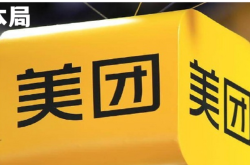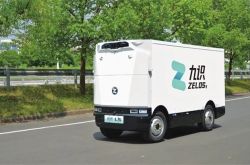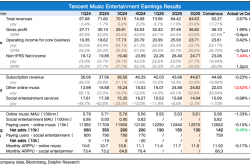Suzhou’s Autonomous Revolution: Self-Driving Buses, Robotic Sweepers, and Delivery Drones Lead the Charge, with QCraft, 905 Technologies, and Weltrist at the Forefront, Unveiling the Industrial Strate
![]() 11/13 2025
11/13 2025
![]() 342
342
Introduction
As dawn breaks over Suzhou, the first rays of sunlight illuminate Zuchongzhi Road in Kunshan High-Tech Zone, where self-driving sweepers are already in full swing, their high-speed rotating brushes swiftly clearing away fallen leaves and branches. Meanwhile, the bottom-mounted water spray system simultaneously suppresses dust, leaving the road surface immaculate.
Elsewhere, in Suzhou Industrial Park, unmanned delivery vehicles skillfully navigate through traffic, heading precisely to their designated delivery points.
In Suzhou High-Speed Railway New Town, Xiangcheng District, unmanned buses smoothly transport passengers from all directions, facilitating seamless transfers...
This is not a scene from a futuristic sci-fi movie but a real-life snapshot of Suzhou’s autonomous driving landscape.
From road testing to real-world implementation, from technological breakthroughs to ecosystem construction, Suzhou is forging ahead in the autonomous driving arena with a strategy of "full-scenario integration and full-ecosystem collaboration," painting a vivid picture of a smart city future.
Let’s delve deeper with Unmanned Vehicle Insights (WeChat Official Account: Unmanned Vehicle Insights)!
(For reference, please click: "The 'Suzhou Brand' Lands in Xi'an, with 905 Technologies' Unmanned Vehicles Expanding Rapidly Across Over 200 Cities Nationwide")

I. Smart Transportation: From "Assisted Driving" to "Human-Like Decision-Making"
On "Intelligent Driving Avenue," Nantiancheng Road in Xiangcheng District, Suzhou QCraft Intelligent Technology Co., Ltd. is redefining mobility with its cutting-edge technology.
Its NOA (Navigate on Autopilot) intelligent assisted driving system has achieved mass production, with over 600,000 units delivered, while its L4 autonomous driving technology is making steady progress.
The Chief Technology Officer shared a scenario that highlights the "human-like" breakthrough in their technology:
"When a vehicle encounters an obstacle on a two-way single-lane road and needs to borrow the opposite lane to bypass it, the system can perceive oncoming traffic in real-time, comprehensively assess the safe distance, and autonomously decide the optimal timing and trajectory for the maneuver—mirroring the decision-making of an experienced driver."

This capability is fueled by massive data and large-scale closed-loop training.
More critically, the mass production practice of L2+ assisted driving serves as "data fuel," continuously feeding into the optimization of the L4 system.
(For reference, please click: "QCraft: A Leader in High-Level Intelligent Driving for Passenger Vehicles with NOA! Secures Hundreds of Millions of Yuan in Series C+ Financing for Autonomous Driving R&D")
As the technical officer put it, "Our vehicles are getting smarter with every mile driven on real roads."
Meanwhile, in Yangcheng Digital Valley, Suzhou Industrial Park, the intelligent connected minibuses open to the public have become a "mobile laboratory" for citizens to experience autonomous driving firsthand. Equipped with LiDAR and high-definition cameras, these minibuses enable real-time perception of environmental changes to ensure safe driving.
According to the Forward-Looking Technology Research Institute of King Long United Automotive Industry (Suzhou) Co., Ltd., the successful development of these minibuses relies on deep collaboration with research institutes, breaking through core technologies such as multi-source perception fusion and decision-making planning, and transitioning smart travel from the lab to mass production.
II. Unmanned Delivery: How "Black Technology" is Revolutionizing Logistics?
On the streets of Suzhou Industrial Park, a "flatbed vehicle" without a distinct front or rear end went viral online with a 9-second video, humorously dubbed as "possessed" by netizens.
This is the Z-series intelligent urban distribution logistics unmanned vehicle developed by Suzhou 905 Technologies.
As the first L4 autonomous driving company in the industry to offer a "turnkey vehicle sales" model, 905 Technologies has deployed thousands of unmanned vehicles in over 200 cities worldwide, accumulating over 10 million kilometers of operational mileage.
(For reference, please click: "905 Technologies and Neolix Secure Large-Scale Financing: How Big is the Pie in the Unmanned Vehicle Sector?")
Take its flagship model, the Z5, for example. It boasts a loading space of 5 cubic meters, a payload capacity of 800 kilograms, and a range of 180 kilometers. Its standout feature is its ability to operate nationwide with "one algorithm"—requiring no regional adjustments for deployment, it can function 24/7 on urban open roads, complex road conditions, and in extreme weather.
After a Suzhou-based enterprise replaced its traditional transportation with the Z5, efficiency increased by over 50%, and annual cost savings reached 458,000 yuan.
Currently, 905 Technologies has unveiled four new models, covering narrow road transportation, urban-rural logistics transfer, industrial logistics, and express delivery across all scenarios.
The new generation of L4 mass-produced series launched last year pioneered a "vehicle sales + FSD (Full Self-Driving)" service model, reducing customer costs by an average of 62%.
The record-breaking sales on the day of the new product launch signal that the logistics industry is accelerating into the era of unmanned delivery.
III. Smart Governance: Unmanned Sweepers "Sweep" Out a New Urban Aesthetic
The self-driving sweeper on Zuchongzhi Road in Kunshan High-Tech Zone is a "cleaning wizard" that seamlessly integrates new energy and artificial intelligence.
Ms. Li, a local resident, observed, "It not only cleans every nook and cranny but also recognizes traffic lights. When it encounters people, it stops from a distance and only resumes work after you pass."
Zhang Haibin, the Operations Director of Autowise.ai, confirmed its efficiency with data: it can operate continuously for 8 hours on a full charge, sweeping 24,000 square meters per hour—equivalent to the workload of 10 sanitation workers—and doubling the efficiency of traditional cleaning vehicles.
(For reference, please click: "Autowise.ai: 'Omnidirectional, All-Weather, Full-Scenario' Autonomous Driving Sweeping Solution Shines at the 2025 China International Fair for Trade in Services! Unmanned Sanitation Vehicles Already Applied in Over 40 Cities Worldwide")
The vehicle is equipped with a 300-liter clean water tank and an 1,800-liter ultra-large garbage bin, supporting long-duration and multi-functional operations, and can automatically complete garbage dumping.

These sweepers are a microcosm of Kunshan’s smart sanitation system construction.
Through a trinity model of "unmanned sweepers + smart cloud platform + sanitation services," managers can monitor vehicle status in real-time, remotely start and stop operations, and switch tasks, achieving real-time supervision, intelligent command, and refined sanitation operations.
A relevant official from the Comprehensive Administrative Law Enforcement Bureau of Kunshan High-Tech Zone said, "In the future, we will expand the coverage of unmanned sweepers to make smart sanitation a new hallmark of urban governance."
IV. Energy Replenishment: Intelligent Charging Robotic Arms Solve the "Last Mile" Challenge
As the scale of autonomous driving fleets expands, efficient and automated energy replenishment becomes paramount.
The L4 intelligent charging robotic arm launched by Suzhou-based company Weltrist offers an innovative solution to this challenge.
With its 360-degree precise recognition, 1.3-meter operational radius, and large-scale orbital sliding capability, it can cover over four parking spaces with a single unit, enabling efficient and automated charging.
(For reference, please click: "Weltrist: The World’s First L4 Autonomous Driving Robotaxi Using Domestic Horizon Chips Empowers SAIC Maxus Mifa 7! Outperforms Waymo and Tesla with a 30% Cost Advantage")

Currently, it has secured an order from CRRC and is deployed at its Zhuzhou Research Base.
A relevant official from Weltrist introduced that the charging robotic arm adopts an advanced visual recognition system, capable of precisely locating the charging port and adapting to different heights and angles.
Unlike manual charging stations, it features human-like flexible contact and adaptive alignment functions, automatically adjusting force and angle during the plugging and unplugging process to ensure a stable and reliable connection.
More notably, the product can be adapted to various new energy vehicle types, including buses, sedans, trucks, logistics vehicles, and sanitation vehicles.
In the future, Weltrist plans to offer a comprehensive "operation + charging" package, bundling autonomous driving vehicles with supporting charging facilities into a one-stop service to further reduce customer procurement and operational costs.
V. Suzhou Example: The Industrial Strategy Behind Full-Scenario Integration
From intelligent travel on public roads to efficient and convenient unmanned logistics;
From smart urban management to automated energy replenishment, Suzhou’s application of autonomous driving technology is marked by "multiple breakthroughs and full-scenario integration."
Behind this lies a forward-looking industrial layout and an open, innovative environment.
Suzhou has attracted a cluster of leading companies such as QCraft, 905 Technologies, and Weltrist, forming a complete industrial chain covering "core components - vehicle manufacturing - scenario applications - infrastructure."

Meanwhile, the government provides "test fields" and "acceleration tracks" for enterprises through policy guidance, scenario openness, and financial support.
For example, Xiangcheng District has created "Intelligent Driving Avenue," Suzhou Industrial Park has built Yangcheng Digital Valley, and Kunshan High-Tech Zone has piloted smart sanitation, all becoming benchmark scenarios for technological implementation.
As a relevant official from the Suzhou Municipal Industry and Information Technology Bureau said, "Suzhou’s goal is not only technological breakthroughs but also to build an intelligent connected vehicle industrial ecosystem, making autonomous driving truly integrate into urban life."
Now, this new industrial landscape of multi-scenario integration and full-ecosystem collaboration is accelerating its bloom on this innovative hotbed in Suzhou.
In conclusion, Unmanned Vehicle Insights (WeChat Official Account: Unmanned Vehicle Insights) believes:
From travel to logistics, from sanitation to charging, Suzhou’s autonomous driving has achieved "full-scenario blossoming."
Here, unmanned vehicles are no longer cold technological products but "helpful companions" integrated into daily life and "new driving forces" propelling urban development.
With continuous technological progress, we will witness an even greater variety of unmanned vehicles in Suzhou, deeply integrating with citizens and the city to jointly outline a new vision of smart living.
What do you think, dear readers?





